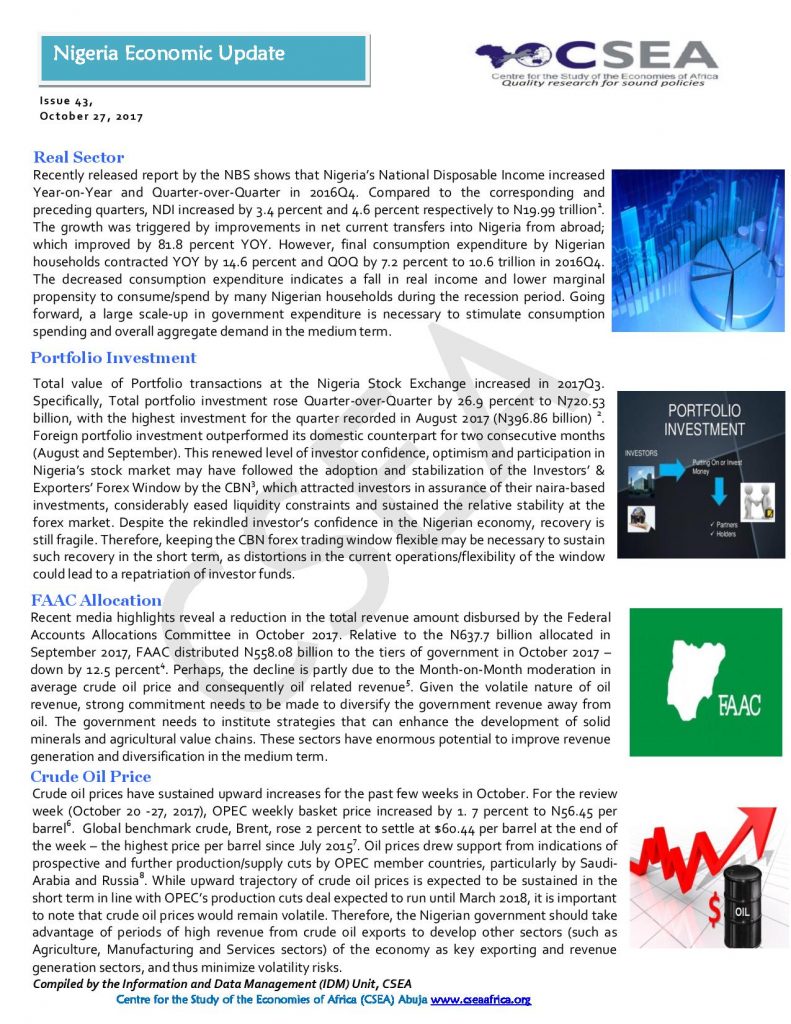Macroeconomic Report & Economic Updates

November 6, 2017
Nigeria Economic Update (Issue 43)
Crude oil prices have sustained upward increases for the past few weeks in October. While upward trajectory of crude oil prices is expected to be sustained in the short term in line with OPECs production cuts deal expected to run until March 2018, it is important to note that crude oil prices would remain volatile. The Nigerian government therefore should take advantage of periods of high revenue from crude oil exports to develop other sectors (such as Agriculture, Manufacturing and Services sectors) of the economy as key exporting and revenue generation sectors, and thus minimize volatility risks
Related
Nigeria Economic Update (Issue 25)
Crude oil price continued to increase in the
period under review, reaching its 2016 peak at $50.30 on June 2, 2016.
Specifically, OPEC weekly basket price increased by 1.43 percent from $44.65 on
May 27, 2016 to $45.29 on June 3, 2016. Brent was sold for $49.96
on June 3, 2016. The present rise in crude oil price can be
attributed to oil production shocks in several oil-exporting countries, and the
general expectation of a further cut in output following the OPEC meeting in
Vienna on June 2, 2016. However, the OPEC meeting ended with no agreement on
production quotas. In Nigeria, oil production level increased in the period
under review, following repairs on some of the damaged oil and gas facilities. Precisely,
Nigerias output increased by 200,000 barrels on June 3, 2016 to 1.6 million
barrels.
